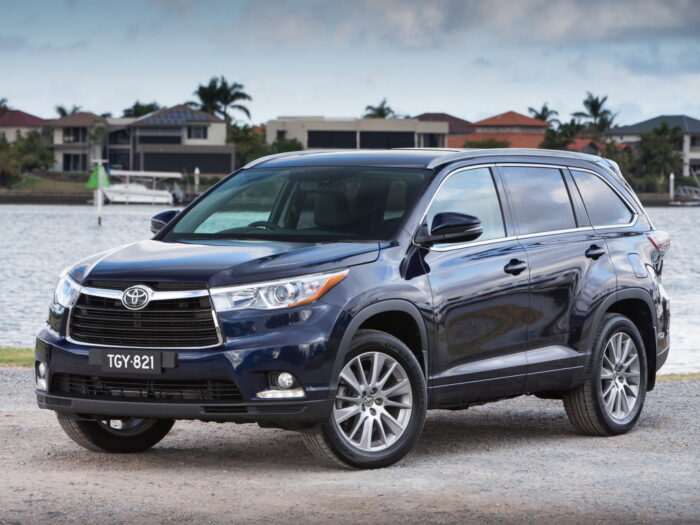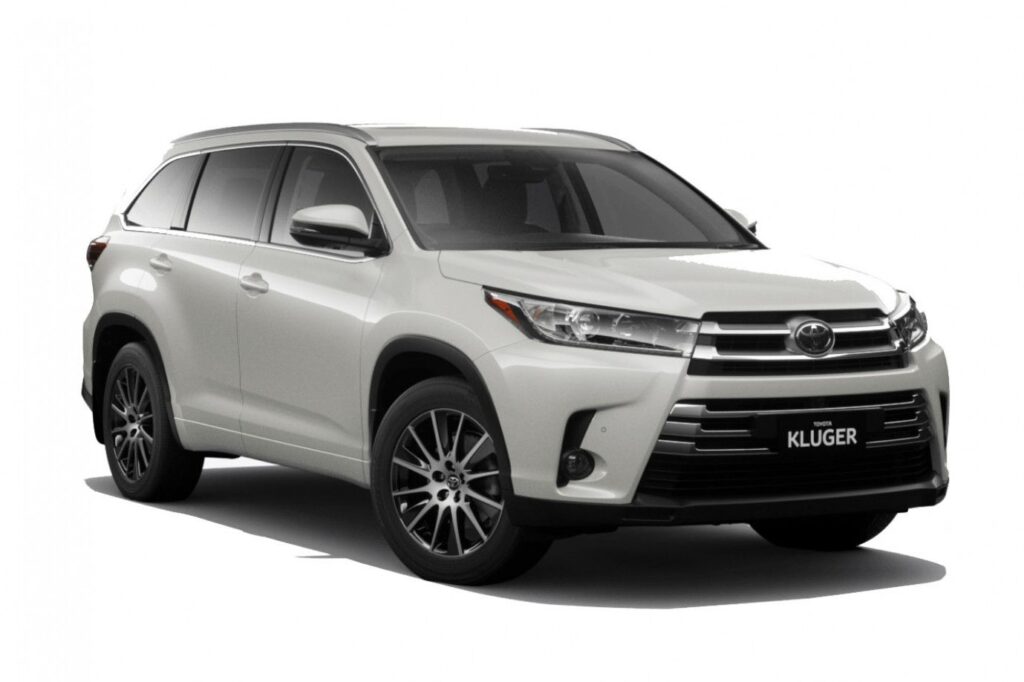Proper tire pressure not only ensures a smoother and safer ride but also contributes to better fuel efficiency and extends the lifespan of your tires. In this comprehensive guide, we will explore the recommended tire pressure for different generations and trim levels of the Toyota Kluger. Additionally, we’ll discuss how to reset the low tire pressure light. So, buckle up and let’s dive right in!
Understanding the Importance of Proper Tire Pressure
Before we delve into the specifics, it’s essential to understand why maintaining the correct tire pressure is crucial for your Toyota Kluger. Adequate tire pressure directly impacts the overall performance and safety of your vehicle. Here are a few key reasons why it matters:
- Improved Safety: Properly inflated tires provide better traction, reducing the risk of accidents, especially during emergency maneuvers or adverse weather conditions.
- Enhanced Fuel Efficiency: Underinflated tires increase rolling resistance, resulting in decreased fuel efficiency. Keeping your tires properly inflated helps optimize your Kluger’s gas mileage.
- Longer Tire Lifespan: Incorrect tire pressure can lead to uneven wear, reducing the lifespan of your tires. By maintaining the recommended pressure, you can maximize their durability and save money in the long run.
Now that we understand the significance of maintaining proper tire pressure let’s move on to the recommended values for various Toyota Kluger generations and trim levels.
Recommended Tire Pressure for Toyota Kluger
Maintaining the proper tire pressure is crucial for your Kluger’s overall performance, including fuel efficiency, handling, and tire longevity. The ideal tire pressure can vary based on the Kluger’s generation and trim level. Here’s a breakdown of the recommended tire pressure for different models:
1. First Generation (2000-2007)
| Trim Level | Front Tires (PSI) | Rear Tires (PSI) |
|---|---|---|
| Base | 30 | 30 |
| Sport | 30 | 30 |
| Limited | 30 | 30 |
2. Second Generation (2007-2013)
| Trim Level | Front Tires (PSI) | Rear Tires (PSI) |
|---|---|---|
| Base | 32 | 32 |
| Sport | 32 | 32 |
| Limited | 32 | 32 |
| SE | 32 | 32 |
3. Third Generation (2013-2021)
| Trim Level | Front Tires (PSI) | Rear Tires (PSI) |
|---|---|---|
| LE | 33 | 33 |
| XLE | 33 | 33 |
| SE | 33 | 33 |
| Limited | 33 | 33 |
| Platinum | 33 | 33 |
| Hybrid LE | 33 | 33 |
| Hybrid XLE | 33 | 33 |
| Hybrid Limited | 33 | 33 |
| Hybrid Platinum | 33 | 33 |
4. Fourth Generation (2022-present)
| Trim Level | Front Tires (PSI) | Rear Tires (PSI) |
|---|---|---|
| LE | 35 | 35 |
| XLE | 35 | 35 |
| XSE | 35 | 35 |
| Limited | 35 | 35 |
| Platinum | 35 | 35 |
| Hybrid LE | 35 | 35 |
| Hybrid XLE | 35 | 35 |
| Hybrid XSE | 35 | 35 |
| Hybrid Limited | 35 | 35 |
| Hybrid Platinum | 35 | 35 |
Please note that these recommended tire pressures are for standard conditions. If you’re planning to load your Kluger with extra cargo or passengers, it’s advisable to adjust the tire pressure accordingly. Always refer to your vehicle’s owner’s manual or consult with a professional mechanic for specific recommendations.
The Importance of Seasonal Tire Pressure
Seasonal changes can significantly impact your vehicle’s tire pressure. Fluctuations in temperature can cause the air inside your tires to expand or contract, leading to overinflation or underinflation. Maintaining the recommended tire pressure for each season is crucial for several reasons:
- Safety: Proper tire pressure ensures optimal traction, handling, and braking performance, minimizing the risk of accidents.
- Performance: The right tire pressure enhances fuel efficiency, vehicle stability, and overall driving experience.
- Tire Longevity: Maintaining the correct pressure helps prevent uneven tire wear, extending the lifespan of your tires.
Now, let’s explore the recommended tire pressure for your Toyota Kluger during summer and winter seasons.

Recommended Tire Pressure for Summer
During the summer months, when temperatures rise, it’s essential to adjust your tire pressure accordingly. Excessive heat can cause the air inside your tires to expand, potentially leading to overinflation. To maintain the optimal tire pressure for your Toyota Kluger during summer, follow these recommendations:
| Tire Position | Recommended Pressure (PSI) |
|---|---|
| Front Left | 32-35 |
| Front Right | 32-35 |
| Rear Left | 32-35 |
| Rear Right | 32-35 |
Ensure that each tire is inflated to the recommended pressure range listed above. Regularly check the tire pressure to account for any changes due to temperature fluctuations or extended drives.
Recommended Tire Pressure for Winter
In contrast to summer, winter brings colder temperatures, which can cause the air inside your tires to contract. This contraction may result in underinflated tires, compromising your vehicle’s performance and safety. To maintain the optimal tire pressure for your Toyota Kluger during winter, follow these recommendations:
| Tire Position | Recommended Pressure (PSI) |
|---|---|
| Front Left | 30-33 |
| Front Right | 30-33 |
| Rear Left | 30-33 |
| Rear Right | 30-33 |
By ensuring that your tires are inflated within the recommended pressure range during winter, you can enhance traction, handling, and braking performance on icy or snowy roads.
Tips for Adjusting Tire Pressure
Here are some essential tips to keep in mind when adjusting your tire pressure:
- Use a reliable tire pressure gauge to measure the current pressure accurately.
- Always check the tire pressure when the tires are cold for the most accurate readings.
- If your tires are overinflated, gently release air until the pressure matches the recommended range.
- If your tires are underinflated, add air until the pressure reaches the recommended range.
- Avoid overinflating or underinflating your tires, as both can affect your vehicle’s performance and safety.
Resetting the Low Tire Pressure Light
Now that you are aware of the recommended tire pressure values for your Toyota Kluger, it’s essential to understand how to reset the low tire pressure warning light in case it illuminates on your dashboard. Follow the steps below to reset the light:
- Start your Kluger’s engine and ensure the vehicle is stationary.
- Locate the TPMS (Tire Pressure Monitoring System) reset button. In most Kluger models, it is located beneath the steering column or near the instrument panel.
- Press and hold the TPMS reset button until the low tire pressure warning light blinks three times. This indicates that the system has been reset.
- Release the reset button and wait for a few minutes. The light should turn off, indicating that the system has successfully reset.
- If the light remains illuminated, it may indicate a problem with one or more tires. In such cases, it’s advisable to inspect the tires for any signs of damage or low pressure and address the issue promptly.
Conclusion
Maintaining the recommended tire pressure for your Toyota Kluger is essential for your safety, vehicle performance, and fuel efficiency. By following the tables provided for different generations and trim levels, you can ensure that your Kluger’s tires are optimally inflated. Additionally, knowing how to reset the low tire pressure light empowers you to take prompt action when necessary.
Remember, your Toyota Kluger deserves the best care, and proper tire pressure is a fundamental aspect of that care. Drive safely, enjoy the journey, and keep those tires rolling smoothly!
